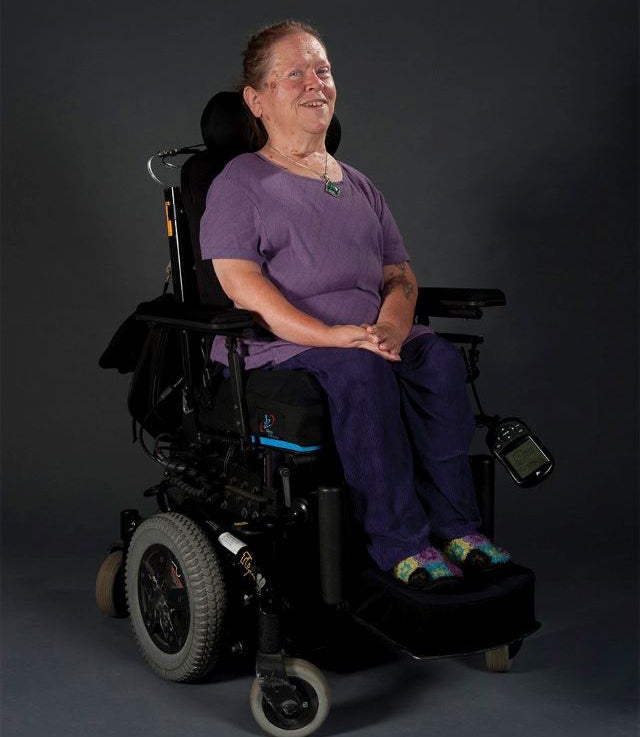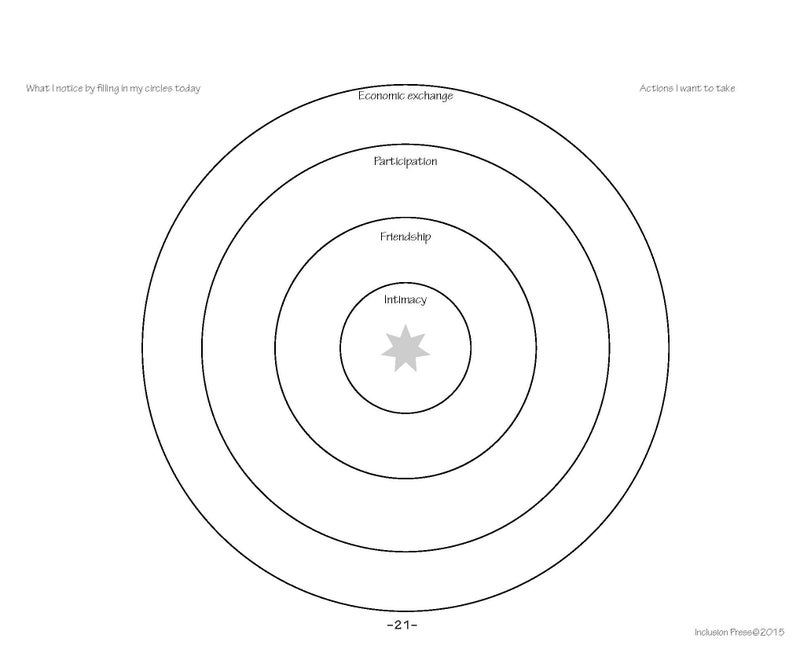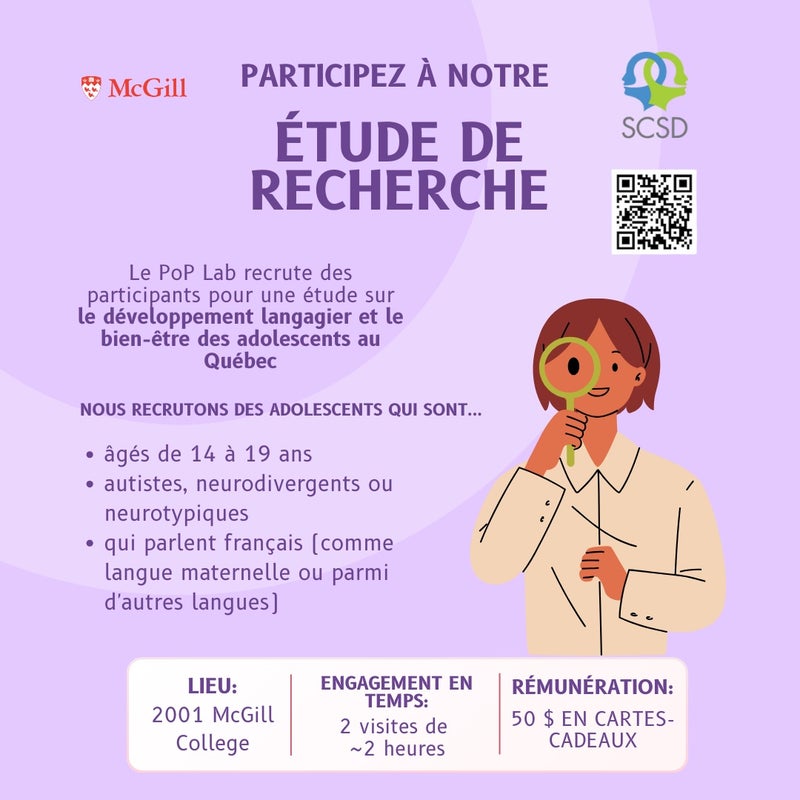Circles of Support respond to parents’ fears, child’s dreams

By Wendy Singer
One of the most troubling questions that occupies the mind of a parent of a person with a disability is, “What will happen to my child (young or adult) when I am not here or able to care for them?” This includes, “Where will they live, who will take care of them and understand their needs the way I do?”
Creating a “Circle of Support,” also known as “Circle of Friends” or “Support Network,” is one way that many families are addressing these questions. Simply put, these models start with the person at the centre (the focus person) and use that person’s network to form concentric circles of individuals who, together, provide support over the individual’s lifespan. Members of a circle usually include people that have developed a relationship with the person at the centre, be it a friend, teacher, therapist, neighbor, co-worker, or relative. Support provided can range from day-to-day issues, staying at a friend’s home for a weekend, finding resources and living arrangements to planning in the event that something happens to the parents. Most uniquely, the network aims to build supportive friendships and relationships with the focus person, listen deeply to their dreams and find ways to realize them.
A brief history of Circles of Support
Judith Snow and Marsha Forest, both life-long advocates for inclusion, introduced their model of Circles of Support to Canadians in the 1980s. Snow had a master’s degree in clinical psychology from Toronto’s York University and founded the university’s Centre for Handicapped Students. After graduating in 1976, her mobility deteriorated and by 1978 she was only able to maneuver her wheelchair with her thumb. Snow had multiple diagnoses, including congenital progressive atrophy of the skeletal muscles due to spinal muscular atrophy.
Forest, Snow, and Jack Pearpoint, president of Inclusion Press, created Snow’s Circle of Support to ensure she was able to live independently with her care team and fulfill her dreams, from marriage to spiritual, social, art, relaxation, and health. The result was Snow’s ability to fulfill her life vision and provide a model of support that people replicate worldwide. (Read more about Snow’s life story on p. 39).
Circles of Support: Moving from exchange to participation
In Snow’s book What’s Really Worth Doing and How To Do It (published by Inclusion Press in 1994), which she typed with her mouth using a breath operated Morse Code system, she shares a diagram of four concentric circles that represent the various types of relationships in our lives. These circles are: (Photo: Circles of Support. Image: Inclusion Press @2015)
- Intimacy: People or things closest to you that you could not imagine your life without, such as family, pets, computer, smartphone.
- Friendship: Good friends and relatives who you enjoy socializing.
- Participation: People you interact with in groups, organizations, clubs, or work colleagues.
- Economic exchange: People you pay to be in your life, such as a therapist, hairdresser, or accountant.
Snow explained these circles: “When someone has been labeled into the ‘special’ world we see a very different pattern emerge in their relationships. In circle two there will usually be fewer people, often none or one or two. In the third circle again there will usually be none or one or two. There will be an explosion in the fourth circle with more than 10, often more than 30 people paid to be in this person’s life. As the third circle remains barren, the person gains no new relationships, interests or opportunities from which to build a fulfilling circle of close friendship and intimacy.”
Circles of Support address this imbalance and help the person at the centre participate in community life where they contribute and are appreciated for their gifts, enabling them to develop and expand relationships in the other circles.
A paradigm shift from disability to giftedness
Circles of Support not only provide the space for a person to share their dreams (“Inclusion holds the fundamental that all people are dreamers,” wrote Snow), they shift the conversation away from deficits and towards each person’s unique gifts.
Wrote Snow: “Believing in disability allows us to have assumptions that people are hampered by limitations. In disability, resources are expended to overcome limitations, creating much activity but no participation. In Giftedness, resources are directed to foster participation.”
Mike Green, a student of Snow’s, supported her during the writing of What’s Really Worth Doing and How To Do It. A father of a child with a disability, he added: “People labeled with disabilities and their loved ones are often so conditioned by the disability paradigm that they cannot see gifts or possibilities. It can feel impractical, embarrassing or foolish to have dreams for a ‘labeled’ loved one who is surrounded by case workers and plans. When people begin to see gifts and begin to participate in the Giftedness paradigm, it is as though a fog has lifted from their eyes. To see gifts after being conditioned to see only deficits and problems is a wrenching, heart opening experience. This different view leads to a new world, it is as simple as a new pair of glasses. We see what we believe.”
How to begin a Circle
- Find a facilitator who will:
- Determine who the circle is for (parents and/or child);
- Make a list of potential Circle members (Snow suggested 20 to 40) that the family knows and trusts;
- Issue the initial invitations;
- Keep meetings going;
- Getting back on track – in case meetings stop or the focus moves to “fixing” activities.
- Circle members will:
- Listen to the dreams of the focus person and find ways to realize them in whatever way is possible;
- Plan for the future;
- Provide support whenever possible.
Note: Not all members participate at the same time. This is meant to be a dynamic group that evolves with each member’s life situation. While supporting the focus person, members gain support and inspiration as well.
For information about Circles of Support, visit https://inclusion.com/.

PLAN sets up Support Networks across Canada
Planned Lifetime Advocacy Network (PLAN) is a Canadian organization established by and for families that is committed to future planning and securing a good life for a relative with a disability.
Originally and currently based in British Columbia, PLAN was created in the 1980s by Al Etmanski, who was the director of The BC Community Living Movement, which focuses on the inclusion of people with disabilities in community life.
PLAN’s mission is “to give parents peace of mind about the future, knowing their children with disabilities will be safe and secure over their lifespan.” The “Support Network” aims to empower people with disabilities to live good lives as part of the community, have financial stability, make informed decisions, find good places to live and plan for the future. As with Judith Snow’s Circles of Support, these networks identify the person at the centre of the network’s gifts and build on them.
Nancy Rother is a psychologist living in Montreal who, throughout her career, has supported people who have a disability and advocated for inclusion. She has been active nationally in the Community Living Movement and worked with PLAN in BC in the early days of its development. The impetus for PLAN stemmed from the realization that the best way to ensure a good quality of life for vulnerable family members when their parents were no longer able to care for them was to create a loving network of friends and family. “We recognized that the biggest handicap for people with disabilities was their social isolation and loneliness. Individuals, in particular those who were educated in segregated settings or worked in sheltered workshops, might have been learning concepts and skills but they did not have the opportunity to participate in community life where they could contribute and develop meaningful, caring relationships with strong friends. They were surrounded by service and paid relationships,” said Rother.
A visit to PLAN’s website will reveal innovative ideas, opportunities for training, consultation, research, publications, and organizational support related to family leadership, social network facilitation, social enterprise, caring citizenship, dialogue, and social sustainability.
For information about PLAN, visit https://plan.ca/.









